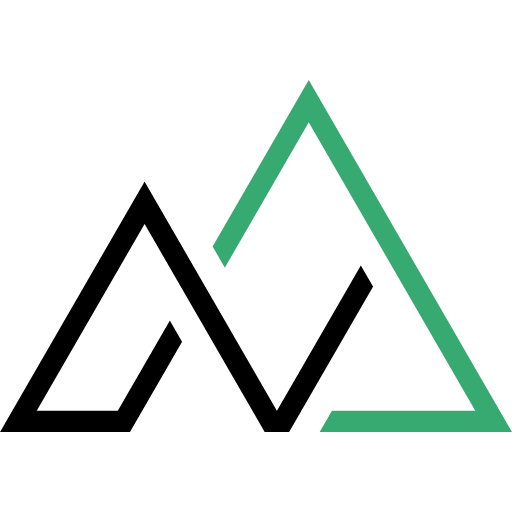Understanding a property’s earning potential is critical for making smart real estate decisions. Rental yield serves as a key metric for evaluating profitability, helping investors compare opportunities objectively. Whether you’re exploring your first purchase or expanding your portfolio, this guide simplifies the process of analyzing returns.
Rental yield measures annual income relative to a property’s value. It answers a straightforward question: How much can this asset generate compared to its cost? This figure helps identify undervalued markets or properties with strong cash flow potential. For Canadian investors, factors like location, maintenance expenses, and vacancy rates directly impact these calculations.
This article breaks down both gross and net yield methods. Gross yield offers a quick snapshot, while net yield provides a detailed view after accounting for expenses. Tools like these empower you to prioritize investments aligned with your financial goals.
New Homes Alberta specializes in guiding buyers through these nuances. For personalized advice on maximizing returns in Alberta’s dynamic market, call (403) 305-9167. Let’s turn data into actionable strategies for your next move.
Key Takeaways
- Rental yield evaluates a property’s income-generating efficiency.
- Gross and net methodologies offer different levels of financial insight.
- Location and operating costs significantly affect profitability.
- Accurate calculations help compare diverse investment opportunities.
- Expert guidance ensures tailored solutions for your portfolio.
Introduction to Rental Yield and Real Estate Investing
Key performance indicators guide savvy investors in real estate decisions. One metric stands out for evaluating assets: rental yield. This percentage-based figure reveals how efficiently a property generates income relative to its value. Investors rely on it to identify opportunities with strong cash flow potential, especially in competitive markets like Alberta.
Overview of Rental Yield and Its Importance
Rental yield acts as a financial compass. It highlights properties that balance affordability with consistent returns. Locations with high demand, such as urban centers near transit hubs, often deliver better results. Consider these factors influencing outcomes:
- Local employment rates shaping tenant demand
- Mortgage rates affecting overall costs
- Seasonal fluctuations in housing needs
Data from 2023 shows Alberta’s average gross yield hovering around 6.8%, outperforming several provinces. This metric helps investors avoid overpriced assets while spotlighting undervalued gems.
About New Homes Alberta and Contact Information
New Homes Alberta simplifies complex market dynamics. Their team analyzes neighborhood trends, zoning changes, and economic forecasts to match clients with ideal properties. With over 15 years of local expertise, they turn raw data into actionable strategies.
For personalized guidance on maximizing returns, reach their specialists at (403) 305-9167. Whether you’re exploring duplexes or commercial spaces, their insights help build portfolios designed for long-term growth.
Understanding Rental Yield: Concepts and Definitions

Evaluating real estate opportunities requires clarity on financial metrics that drive profitability. Rental yield acts as a percentage-based indicator, measuring annual earnings against a property’s market value. This ratio helps investors assess whether an asset aligns with their income goals or carries hidden risks.
What Is Rental Yield?
Rental yield represents the relationship between a property’s yearly income and its purchase price. For example, a home generating $24,000 in annual rental income with a $400,000 value has a 6% yield. Key factors like maintenance, property taxes, and insurance affect this figure by altering net returns.
Operating expenses reduce profitability, making accurate tracking essential. A $500 monthly repair bill could slash returns by 1.5% annually. Market conditions also play a role—cities with rising demand often support higher rents without proportionally increasing purchase costs.
Why Rental Yield Matters for Investors
This metric simplifies comparisons between properties in different markets. A 5% yield in Calgary might outperform an 8% return in a stagnant region when accounting for appreciation potential. Investors prioritize assets balancing immediate cash flow with long-term value growth.
Understanding percentage conversions ensures apples-to-apples evaluations. It also highlights risks like vacancies or interest rate hikes. For instance, a 1% rate increase could erase margins in low-yield properties, emphasizing the need for buffer calculations.
How to Calculate Rental Yield

Determining a property’s financial performance starts with precise metrics. Three core elements shape this analysis: projected earnings, ownership costs, and asset valuation. Let’s explore the data needed before crunching numbers.
Essential Inputs: Rental Income, Operating Costs, and Property Value
Begin by gathering these financial details:
| Input | Example | Source |
|---|---|---|
| Annual Rental Income | $30,000 ($2,500/month) | Lease agreements |
| Operating Costs | $6,000 (maintenance + taxes) | Utility bills, tax statements |
| Market Value | $450,000 | Recent appraisal |
Tip: Alberta’s average property prices rose 3.2% last year—always use current figures.
Step-by-Step Calculation Process
- Divide yearly income by the property’s value: $30,000 ÷ $450,000 = 0.0667
- Multiply by 100 to convert to a percentage: 0.0667 × 100 = 6.67%
“Accurate inputs transform projections into reliable strategies.”
For net yield, subtract expenses first: ($30,000 – $6,000) ÷ $450,000 × 100 = 5.33%. This rate helps compare properties across cities like Edmonton and Calgary objectively.
Gross Rental Yield vs. Net Rental Yield: Core Differences

Real estate investors often juggle multiple metrics, but two stand out for assessing income potential. Gross and net yields provide distinct perspectives on profitability—one offering simplicity, the other precision.
Defining Gross Rental Yield
Gross yield measures annual income against a property’s market value, excluding expenses. For example, a $400,000 home generating $30,000 yearly rent shows a 7.5% gross return. This method suits quick comparisons between neighborhoods or property types.
Exploring Net Rental Yield and Its Accuracy
Net yield deducts operating costs like repairs, insurance, and property management fees. Using the same $400,000 asset with $8,000 in yearly expenses: ($30,000 – $8,000) ÷ $400,000 × 100 = 5.5%. This reflects actual cash flow after bills.
| Aspect | Gross Yield | Net Yield |
|---|---|---|
| Expenses Included | No | Yes |
| Typical Use Case | Initial comparisons | Profitability analysis |
| Calgary Example (2023) | 6.1% | 4.3% |
New Homes Alberta advisors note, “Net yield separates hopeful projections from bankable returns.” While gross figures help screen opportunities, net calculations prevent costly oversights—especially in markets like Edmonton, where winter maintenance costs slash margins.
Investors targeting long-term growth prioritize net metrics. Those focusing on appreciation might accept lower immediate returns. Either way, understanding both percentages ensures informed decisions aligned with financial objectives.
Rental Yield Calculation Examples

Numbers tell the real story in property investment. Let’s examine practical scenarios showing how income and costs translate into actionable percentages.
Gross Yield Scenario: Urban Condo Investment
Imagine a condo bought for $350,000 generating $21,000 in annual rental income. Here’s the math:
- Divide yearly income by purchase price: $21,000 ÷ $350,000 = 0.06
- Multiply by 100: 0.06 × 100 = 6% gross yield
This figure helps compare properties quickly. However, it doesn’t account for ongoing costs like taxes or maintenance.
Net Yield Breakdown: Suburban Townhouse
Take the same $350,000 property with added expenses:
- Property taxes: $2,400/year
- Insurance: $900
- Maintenance: $2,200
Total operating costs: $5,500. Net income becomes $15,500 ($21,000 – $5,500).
- Divide net income by purchase price: $15,500 ÷ $350,000 = 0.0443
- Convert to percentage: 4.43% net yield
| Aspect | Gross Yield | Net Yield |
|---|---|---|
| Purchase Price | $350,000 | $350,000 |
| Annual Income | $21,000 | $15,500 |
| Resulting Percentage | 6% | 4.43% |
“Minor adjustments in expenses or rental rates can shift your returns by a full percentage point within a year.”
These examples demonstrate why tracking every dollar matters. A $100/month rent increase boosts annual income by $1,200—potentially lifting yields by 0.34% on a $350,000 asset.
Factors That Impact Rental Yield and Investment Returns
Property investments thrive or stumble based on factors within and beyond an owner’s control. Recognizing these variables helps investors anticipate risks and optimize strategies for consistent returns.
Internal and External Factors Affecting Rental Yield
Routine maintenance preserves property value but adds recurring costs. A leaky roof or aging HVAC system demands immediate repair, slicing into annual profits. Insurance premiums also fluctuate based on coverage levels and regional risks like extreme weather.
Market dynamics play an equally crucial role. Neighborhood revitalization projects might boost rental potential, while economic downturns can prolong vacancy periods. Timing purchases during buyer-friendly markets often enhances long-term gains.
Managing Operating Expenses and Vacancy Rates
Savvy investors track every dollar. Consider this comparison:
| Cost Category | Average Annual Expense (CAD) | Impact on Yield |
|---|---|---|
| Preventive Maintenance | $1,200 – $3,000 | Reduces major repair needs |
| Property Insurance | $800 – $2,500 | Protects against liability |
| Vacancy Periods | 1-3 months/year | Direct income loss |
New Homes Alberta advisors emphasize, “Proactive expense tracking turns unpredictable costs into manageable line items.” Regular lease reviews and tenant retention programs further stabilize cash flow. Allocating funds for emergencies ensures time-sensitive issues don’t derail profitability.
Tools and Strategies for Optimizing Real Estate Returns
Modern investors rely on precise tools to refine their strategies. Digital calculators and advanced software transform raw data into actionable insights, helping owners maximize profits while minimizing risks.
Using Rental Yield Calculators Effectively
Specialized calculators streamline financial analysis. These tools typically require:
- Annual income projections
- Detailed expense categories (taxes, repairs)
- Current market valuations
For example, inputting a $550,000 duplex with $42,000 yearly rent and $9,000 costs reveals a 6% net return. Accurate inputs help compare multiple properties quickly.
An Introduction to ROI and Leverage in Rental Investments
Leverage amplifies purchasing power. Consider this scenario:
| Strategy | Down Payment | Annual Net Profit |
|---|---|---|
| Cash Purchase | $500,000 | $30,000 |
| 80% Mortgage | $100,000 | $22,000 |
While the cash buyer earns more absolute profit, leveraging allows acquiring five properties with the same capital. New Homes Alberta advisors note, “Smart leverage balances risk exposure with portfolio growth potential.”
Key tactics include automating expense tracking and negotiating bulk service discounts. Investors who monitor maintenance costs and tenant retention rates often achieve 10-15% higher annual returns.
Conclusion
Smart property investment hinges on actionable insights. This guide outlined critical metrics for evaluating assets, emphasizing the distinction between gross and net returns. Gross figures offer simplicity, while net percentages reflect true profitability after deducting fees, taxes, and upkeep costs.
Accurate data transforms calculations into reliable strategies. Whether analyzing urban condos or suburban townhomes, incorporating variables like vacancy rates and credit terms sharpens projections. Remember, even minor adjustments to rental income or operating expenses can shift outcomes by whole percentage points.
Beyond formulas, consider property types and local market trends. A duplex in Calgary might deliver different cash flow patterns than an Edmonton single-family home. Partnering with experts helps navigate these nuances while avoiding costly oversights.
Ready to refine your approach? Review your numbers, factor in hidden fees, and connect with New Homes Alberta at (403) 305-9167. Their team transforms complex data into tailored investment plans—ensuring your portfolio aligns with both immediate goals and long-term growth.





